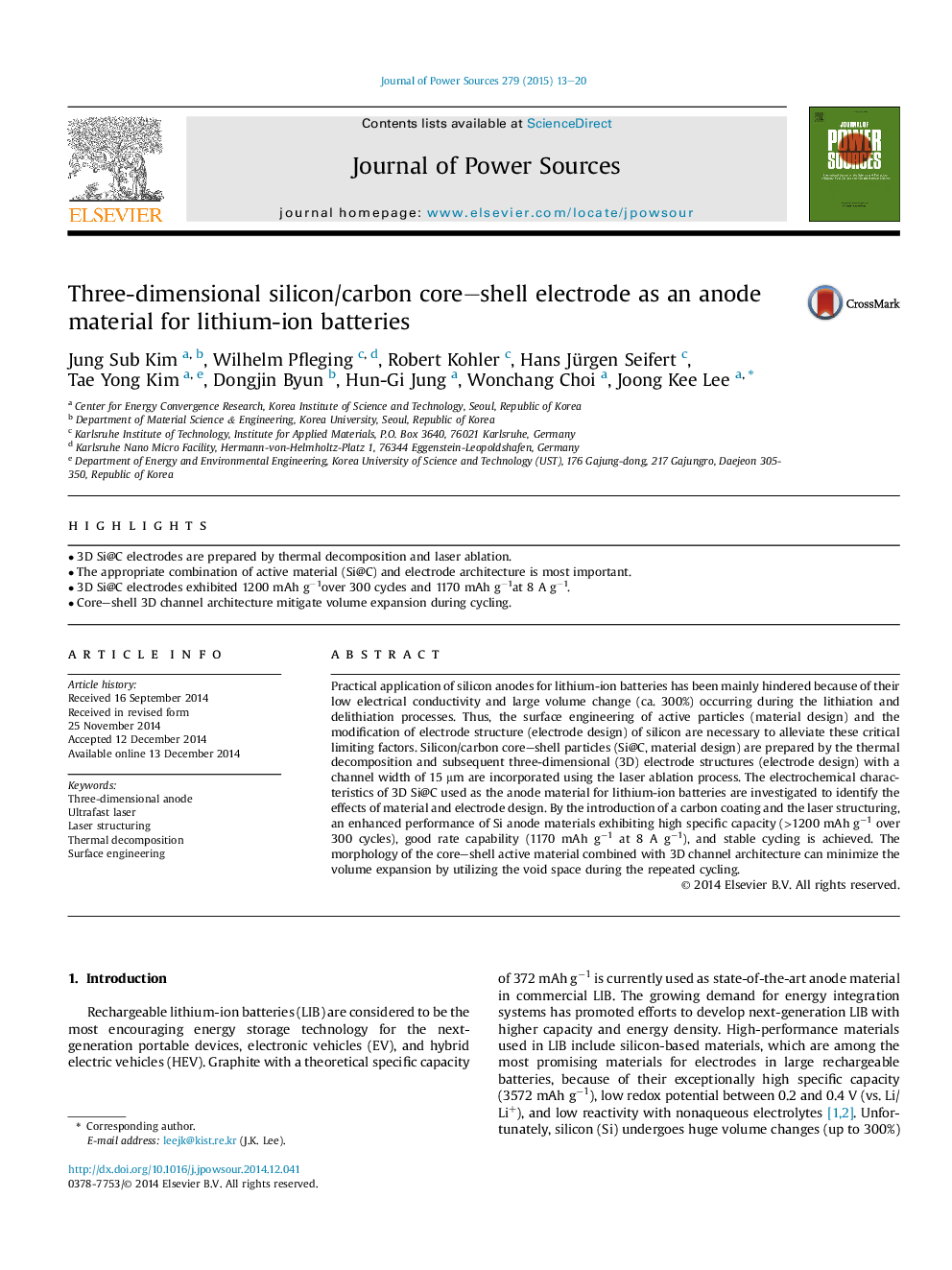| Article ID | Journal | Published Year | Pages | File Type |
|---|---|---|---|---|
| 7733607 | Journal of Power Sources | 2015 | 8 Pages |
Abstract
Practical application of silicon anodes for lithium-ion batteries has been mainly hindered because of their low electrical conductivity and large volume change (ca. 300%) occurring during the lithiation and delithiation processes. Thus, the surface engineering of active particles (material design) and the modification of electrode structure (electrode design) of silicon are necessary to alleviate these critical limiting factors. Silicon/carbon core-shell particles (Si@C, material design) are prepared by the thermal decomposition and subsequent three-dimensional (3D) electrode structures (electrode design) with a channel width of 15 μm are incorporated using the laser ablation process. The electrochemical characteristics of 3D Si@C used as the anode material for lithium-ion batteries are investigated to identify the effects of material and electrode design. By the introduction of a carbon coating and the laser structuring, an enhanced performance of Si anode materials exhibiting high specific capacity (>1200 mAh gâ1 over 300 cycles), good rate capability (1170 mAh gâ1 at 8 A gâ1), and stable cycling is achieved. The morphology of the core-shell active material combined with 3D channel architecture can minimize the volume expansion by utilizing the void space during the repeated cycling.
Related Topics
Physical Sciences and Engineering
Chemistry
Electrochemistry
Authors
Jung Sub Kim, Wilhelm Pfleging, Robert Kohler, Hans Jürgen Seifert, Tae Yong Kim, Dongjin Byun, Hun-Gi Jung, Wonchang Choi, Joong Kee Lee,
